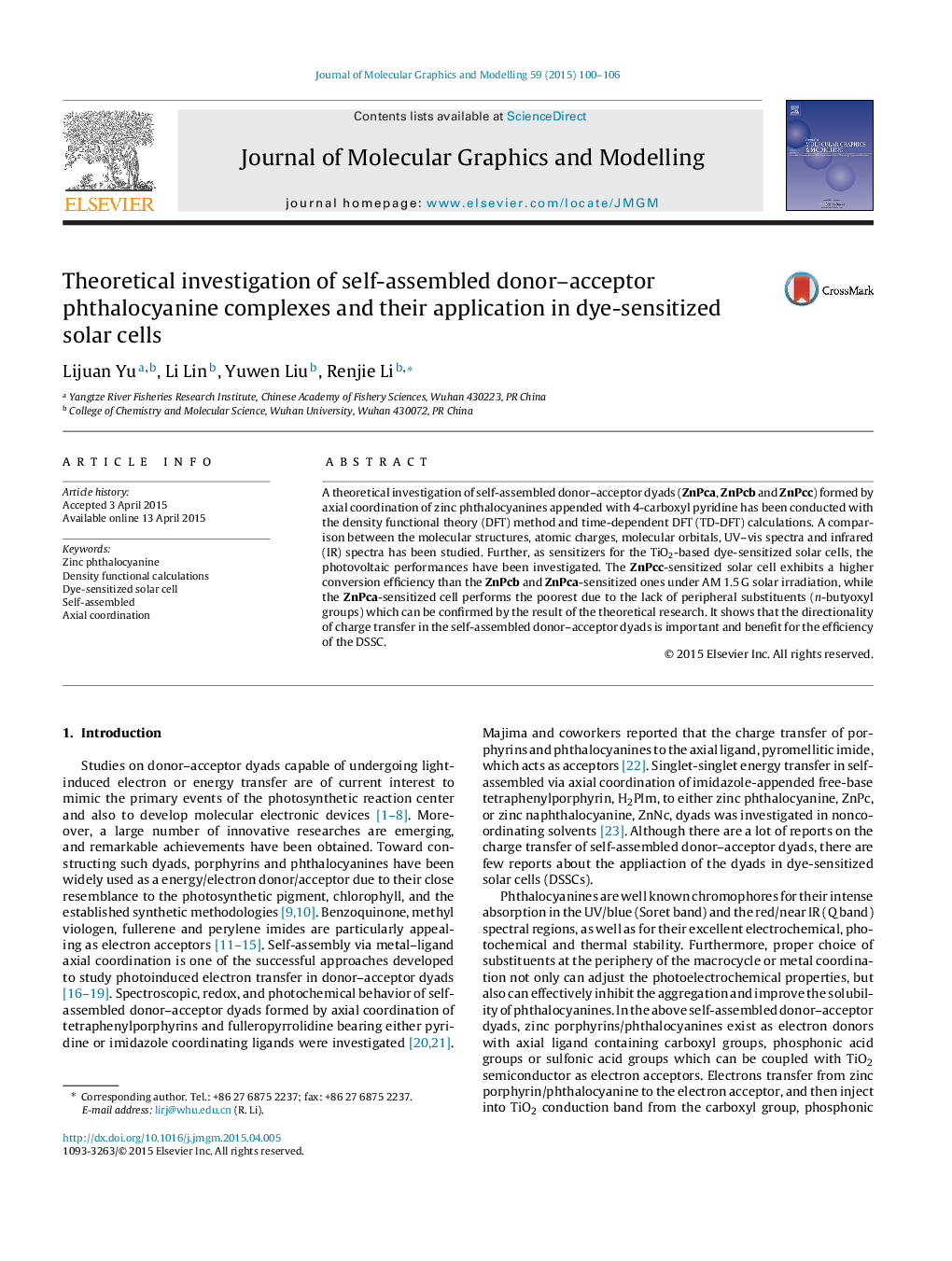| Article ID | Journal | Published Year | Pages | File Type |
|---|---|---|---|---|
| 443287 | Journal of Molecular Graphics and Modelling | 2015 | 7 Pages |
•A theoretical investigation of ZnPca, ZnPcb and ZnPcc has been conducted.•The photovoltaic performances of the self-assembled complexes were investigated.•The n-butyoxyl groups bring significant influence on the properties of the complexes.•The theoretical research and the experiment prove the directional charge transfer.
A theoretical investigation of self-assembled donor–acceptor dyads (ZnPca, ZnPcb and ZnPcc) formed by axial coordination of zinc phthalocyanines appended with 4-carboxyl pyridine has been conducted with the density functional theory (DFT) method and time-dependent DFT (TD-DFT) calculations. A comparison between the molecular structures, atomic charges, molecular orbitals, UV–vis spectra and infrared (IR) spectra has been studied. Further, as sensitizers for the TiO2-based dye-sensitized solar cells, the photovoltaic performances have been investigated. The ZnPcc-sensitized solar cell exhibits a higher conversion efficiency than the ZnPcb and ZnPca-sensitized ones under AM 1.5 G solar irradiation, while the ZnPca-sensitized cell performs the poorest due to the lack of peripheral substituents (n-butyoxyl groups) which can be confirmed by the result of the theoretical research. It shows that the directionality of charge transfer in the self-assembled donor–acceptor dyads is important and benefit for the efficiency of the DSSC.
Graphical abstractFigure optionsDownload full-size imageDownload high-quality image (110 K)Download as PowerPoint slide
